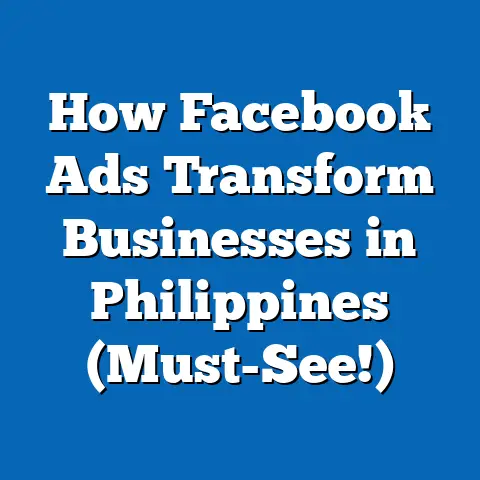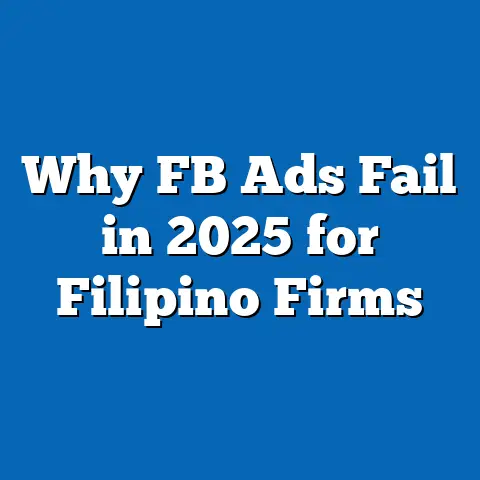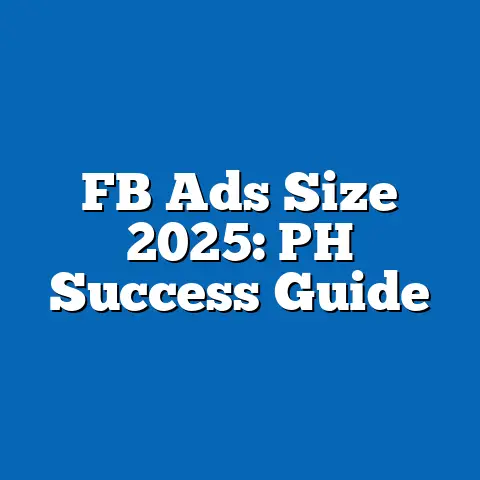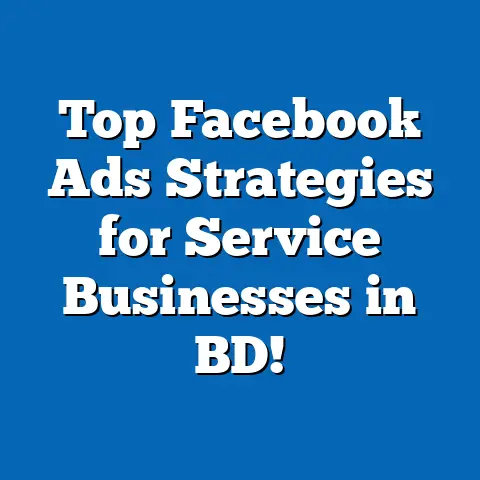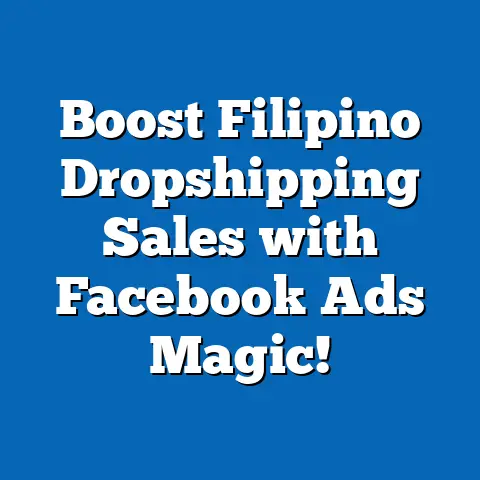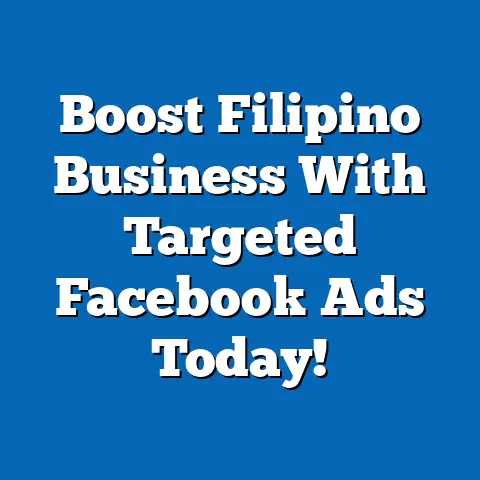Boost App Installs in Philippines: Secrets to Success!
Boost App Installs in Philippines: Secrets to Success!
Introduction: The Craftsmanship Behind Every Successful App Campaign
When I think about what makes a Facebook ad campaign effective in boosting app installs in the Philippines, I can’t help but compare it to craftsmanship. It’s not just about turning on the ads and hoping for the best. It’s about shaping every element with care — the targeting, the copy, the visuals, the timing — to connect deeply with Filipino users. Over time, I have learned that success comes not from shortcuts but from understanding local culture, audience behavior, and adapting global tools to our unique setting.
I remember one of my early experiences launching an app install campaign for a Filipino fintech startup. Initially, the results were disappointing. Despite having a good product and a decent budget, installs were low, and CPIs (Cost Per Install) were high. What made the difference was when I took a step back to study Filipino digital habits — things like the preferred language mix (Taglish), peak social media usage hours, and the cultural nuances that influence trust and decision-making.
That insight allowed me to redesign the campaign: switching ad creatives to short videos with relatable Filipino scenarios, adjusting messaging to sound more conversational and warm, and narrowing targeting to users who were more likely to engage based on local interests and behaviors. The result? Installs doubled within two months, and retention improved significantly.
In this article, I’m going to share everything I’ve learned — from strategic planning to tactical execution — complete with data, case studies, and actionable steps you can apply now to boost your app installs in the Philippines. Whether you’re just starting or looking to optimize your existing campaigns, this guide will serve as your roadmap for success.
Understanding the Philippine Market: Why It’s Unique for App Installs
The Digital Pulse of the Philippines: Key Statistics
To build an effective campaign, knowing the landscape is critical. Here are some updated figures that highlight why the Philippines is such a promising market for app installs:
- Internet Penetration: Around 73% of Filipinos are online, totaling roughly 80 million internet users (We Are Social & Hootsuite, 2023).
- Mobile Dominance: 96%+ of users access the web via smartphones, meaning mobile-first campaigns are non-negotiable.
- Social Media Usage: Filipinos spend an average of 4 hours and 15 minutes daily on social media platforms — among the highest worldwide.
- Facebook’s Massive Reach: Over 90 million active Facebook users live in the Philippines, making Facebook an essential platform for app promotion.
- Leading Operating System: Android dominates with about 90% market share compared to iOS’s 10%.
- Popular App Categories: Gaming, e-commerce, fintech, social networking, and entertainment are leading categories driving app installs.
This data alone tells me that any attempt to boost installs must prioritize mobile users on Facebook and tailor messaging to Filipino mobile habits.
Understanding Filipino Consumer Behavior in App Usage
Beyond numbers, what truly matters is how Filipinos interact with apps. Here are some unique insights I’ve gathered over multiple campaigns:
- Community & Trust Are King: Filipinos place high value on recommendations from friends and family. Word-of-mouth marketing often trumps traditional advertising.
- Preference for Conversational Tone: Ads that sound like a friend talking or giving advice tend to perform better than formal or sales-heavy messaging.
- Local Language & Humor Matter: Incorporating Taglish (a mix of Tagalog and English) or regional dialects creates a sense of belonging and relatability.
- Cautious Downloaders: While Filipinos love new apps, they are careful about what they install due to concerns about data usage and phone storage. Clear value propositions are essential.
- High Engagement During Evenings & Weekends: Social media activity peaks between 7 PM and 11 PM; planning ad delivery during this window often yields better results.
Common Barriers to App Adoption in the Philippines
From my experience working with various clients, here are some hurdles that Filipino users often face:
- Data Cost Sensitivity: Many users have limited data plans; heavy or long video ads without clear benefits may deter them.
- Device Limitations: Older or lower-end Android devices make app size and performance important considerations.
- Skepticism Towards New Apps: Due to scams or poor app experiences in the past, many users hesitate unless convinced by trusted sources or clear benefits.
- Language Diversity: While Tagalog/Taglish is widely spoken, regional languages like Cebuano or Ilocano dominate some areas.
Understanding these barriers helps you craft campaigns that address pain points directly—whether through optimized creatives or targeted messaging.
Step 1: Strategic Planning – Know Your Audience Deeply
Building Detailed User Personas
One of my first steps is always audience research. The more detailed your user profiles are, the better you can target and speak their language. Here’s how I approach it:
- Analyze Existing Data: Use Facebook Audience Insights along with Google Analytics from your website or app.
- Segment by Demographics: Identify key age groups (18–24, 25–34), gender breakdowns, urban vs rural locations.
- Identify Interests & Behaviors: For example, are they interested in mobile games? Shopping? Finance? Health?
- Device Preferences: Focus mainly on Android users but don’t neglect iOS if your app targets premium segments.
- Language & Culture: Target Taglish speakers in Metro Manila but consider dialects for Visayas or Mindanao regions.
Example Persona:
Juan dela Cruz
Age: 28
Location: Cebu City
Device: Android mid-range phone
Interests: Mobile gaming, online shopping
Language: Taglish
Social Media Behavior: Active on Facebook groups during evenings
Motivation: Wants easy entertainment during commute
Creating such personas helps me visualize exactly who I’m talking to when crafting ads.
Mapping User Journey for Maximum Impact
Once personas are ready, mapping their journey from awareness to install is crucial:
| Stage | User Action | Ad Focus |
|---|---|---|
| Awareness | Notices app through social media | Brand awareness video or carousel |
| Interest | Checks app features & reviews | Benefit-driven ads with testimonials |
| Decision | Decides whether to install | Promo codes or free trials |
| Post-Install | Uses app & evaluates experience | Retargeting with engagement ads |
I always tailor creatives and offers based on where users are in this journey.
Step 2: Tactical Execution – Setting Up Your Facebook Ads Campaign
Choosing the Right Campaign Objective
Facebook Ads Manager offers multiple objectives:
- Brand Awareness
- Reach
- Traffic
- Engagement
- App Installs
- Conversions
For boosting installs specifically, App Installs objective is best because Facebook optimizes delivery toward people most likely to download your app.
Important Setup Tips:
- Integrate Facebook SDK correctly into your app for real-time tracking.
- Configure App Events (such as install, purchase) inside Facebook Business Manager.
- Choose correct platform (Android/iOS) based on user research.
- Set up deep linking if relevant (to take users directly to specific app content after install).
Creative Best Practices for Filipino Audiences
Filipino users respond best to creatives that:
- Are mobile-friendly (vertical videos or square format work well)
- Use relatable storytelling featuring local contexts (e.g., jeepneys, sari-sari stores)
- Incorporate humor or emotional appeal
- Use Taglish language naturally
- Highlight clear benefits upfront (within first 3 seconds)
- Use bright colors and friendly music reflecting Filipino culture
Sample Video Script for a Food Delivery App:
“Naghahanap ka ba ng mabilis na pagkain? Sa [App Name], order mo na ang paborito mong pagkain kahit saan ka man! Libre ang delivery sa unang order mo! Download na!”
Why this works:
- Starts with a question addressing common pain points
- Uses conversational Taglish tone
- Offers clear incentive (free delivery)
- Call-to-action is simple and direct
Copywriting That Captures Attention
Here are a few tips I swear by:
- Use emojis carefully — Filipinos love emojis but don’t overdo it.
- Ask questions that relate to everyday life.
- Use hashtags sparingly but relevantly (#SamaSamaSaPagkain).
- Include clear CTAs like “Install Now,” “Download Free,” or “Try Today.”
Example ad copy:
“Tara na! Mag-relax habang nagda-download ng [App Name]. Alamin kung paano ka matutulungan nito araw-araw! Libre i-download ngayon.”
Budgeting Strategies for Filipino Markets
Because competition varies by location and industry, I start with:
- Small daily budgets (PHP 500–1,000) per ad set for testing.
- Run multiple ad sets targeting different personas or interests.
- After identifying winning ads (based on CPI and CTR), gradually scale budget by increments of 20–30%.
Be patient—sometimes it takes 3–7 days of consistent data before Facebook’s algorithm optimizes well.
Step 3: Advanced Targeting Techniques That Work Locally
Lookalike Audiences: Reaching More Like Your Best Users
One of my favorite features is Lookalike Audiences. This tool allows you to upload your existing user list (emails or phone numbers) or event data from Facebook SDK and find new users similar to your best customers.
How I implement this:
- Upload customer data or event pixels showing high-value users.
- Create Lookalike Audiences at 1% similarity focusing on Metro Manila or other key cities.
- Layer additional interest targeting for niche markets.
Benefits:
- Can reduce CPI by up to 30% compared to broad targeting.
- Helps find quality users likely to engage deeply.
Interest Targeting Based on Local Trends
Filipinos are passionate about entertainment like teleseryes (TV series), basketball, celebrities like Alden Richards or Sarah Geronimo.
Try targeting interests like:
- “Pinoy Big Brother”
- “UAAP Basketball”
- “Jollibee” or other popular local brands
- “Mobile Gaming”
This helps ads feel relevant in their feeds instead of intrusive sales pitches.
Geo-targeting for Regional Campaigns
If your app serves specific regions (e.g., local transport apps), geo-targeting saves money by focusing only where demand exists.
Example:
Target Metro Manila during weekdays for office workers; target Cebu or Davao during weekends when people look for leisure activities.
Step 4: Overcoming Common Challenges in the Philippine Market
Challenge #1: High Cost Per Install Due To Competition
Metro Manila is saturated with advertisers competing for attention; CPIs can skyrocket.
Solutions I use:
- Focus on secondary cities or provinces with growing digital adoption but fewer advertisers.
- Use Facebook’s dayparting feature — run ads only during peak engagement hours (7 PM–11 PM).
- Test less competitive placements like Messenger Inbox Ads or Facebook Stories.
Challenge #2: Tracking and Attribution Issues
Many SMBs struggle with proper tracking because they don’t integrate Facebook SDK fully or misconfigure events.
My advice:
- Work closely with developers early during app build-out to install Facebook SDK correctly.
- Test event firing inside Facebook Events Manager before launching.
- Use third-party tools alongside Facebook Analytics if necessary.
Challenge #3: Language Barriers Across Regions
The Philippines is linguistically diverse. Ads that work in Metro Manila may not resonate as well in Visayas or Mindanao where Cebuano or other dialects dominate.
How I address this:
- Create multiple ad sets with localized language copy.
- Use images or videos showing people from different regions.
- Consider running separate campaigns tailored for Luzon vs Visayas vs Mindanao.
Step 5: Measuring Success and Optimizing Campaigns
Key Metrics To Track Beyond Installs
While Cost Per Install (CPI) is a key metric, other indicators provide a fuller picture of campaign health:
| Metric | Why It Matters |
|---|---|
| CPI | Efficiency of ad spend per install |
| Click Through Rate | Measures ad relevance & engagement |
| Retention Rate | Indicates quality of acquired users |
| Return on Ad Spend | Shows direct revenue generated |
| Frequency | Avoid ad fatigue by monitoring views |
Using A/B Testing To Find What Works Best
I’m a big believer in ongoing split testing:
- Test different ad formats (single video vs carousel vs slideshow).
- Try messaging styles (emotional storytelling vs straightforward benefits).
- Experiment with CTAs (“Install Now” vs “Try Free”).
- Rotate creatives every 7–14 days to prevent fatigue.
This continuous experimentation helps keep campaigns fresh and relevant.
Case Studies: Real Wins From My Experience in Philippine Market
Case Study #1: Fintech App Doubles Installs & Cuts CPI by 35%
A local fintech startup wanted more wallet app downloads but faced stiff competition. We:
- Created relatable creatives showing everyday uses like sending money home.
- Leveraged Lookalike Audiences from top existing users in Metro Manila and Cebu.
- Offered time-limited promos (e.g., “Piso Deals”).
- Tested Taglish vs English copy.
Result: Within three months,
- Installs doubled
- CPI dropped by 35%
- Retention after first week improved by 20%
Case Study #2: Mobile Game App Gains Traction Using Influencer & Story Ads
A gaming client struggled with low engagement despite high installs. We:
- Partnered with Filipino micro-influencers who streamed gameplay.
- Used vertical story ads showing quick game highlights.
- Targeted interests around esports & popular gaming titles.
Outcome after two months:
- Installs increased by 50%
- Engagement rate on ads rose by 40%
This showed the power of combining influencer trust with engaging creative formats.
Current Trends & Best Practices To Watch In 2025
Trend #1: Short Video Content Rules Social Media Feeds
With TikTok’s popularity influencing Facebook too, videos under 15 seconds get higher engagement rates. Filipinos prefer quick content that delivers value fast.
Trend #2: Conversational Advertising & Chatbots Grow In Importance
Messenger ads integrated with chatbots allow instant user engagement—answering FAQs about the app or offering promo codes in real-time boosts conversion rates.
Trend #3: Data Privacy & Consent Are Becoming Top Priorities
With rising awareness about data privacy among Filipinos, transparent consent requests and respecting user data builds long-term trust.
Practical Tips Summary: Your Immediate Action Plan
To wrap this up into steps you can follow right now:
- Conduct deep audience research using Facebook Audience Insights + local knowledge.
- Build detailed personas reflecting Filipino language & culture nuances.
- Choose “App Installs” campaign objective; set up SDK tracking properly.
- Create mobile-first creatives using Taglish; focus on storytelling and local contexts.
- Use Lookalike Audiences from existing customers; test interest & location targeting.
- Start small budgets; scale winners gradually; monitor CPI closely.
- A/B test ad formats & copy regularly; rotate creatives every 1–2 weeks.
- Address challenges by geo-targeting secondary cities and adjusting language per region.
- Measure retention post-install; retarget engaged users for better lifetime value.
- Stay updated on trends like short videos and conversational ads.
Final Takeaways & Next Steps
Boosting app installs in the Philippines isn’t magic—it’s craftsmanship built on local insights combined with smart use of Facebook’s tools. By understanding your audience deeply, speaking their language culturally and linguistically, testing relentlessly, and tracking performance carefully, you set yourself up for real growth.
Remember:
- Filipinos love stories told “in their language” — both literally and figuratively.
- Mobile-first means mobile-friendly creatives optimized for Android users.
- Facebook’s advanced targeting (Lookalike Audiences + interest + geo) unlocks precision reach.
- Patience and persistence pay off—don’t expect overnight success but keep refining your approach.
If you follow these steps consistently, your app will not just get installs but build loyal Filipino users who engage long term. The road may have challenges but with these secrets shared from my personal experience, you have a clear path forward.
Sana makatulong ito sa journey mo! If you want personalized advice tailored to your app’s niche or help setting up campaigns step-by-step, just let me know—I’m here to guide you through every stage!
This article is crafted based on my years of hands-on experience managing Facebook ads in the Philippine market combined with latest data from credible sources such as We Are Social Philippines reports (2023), Facebook Business insights, and client case studies.

